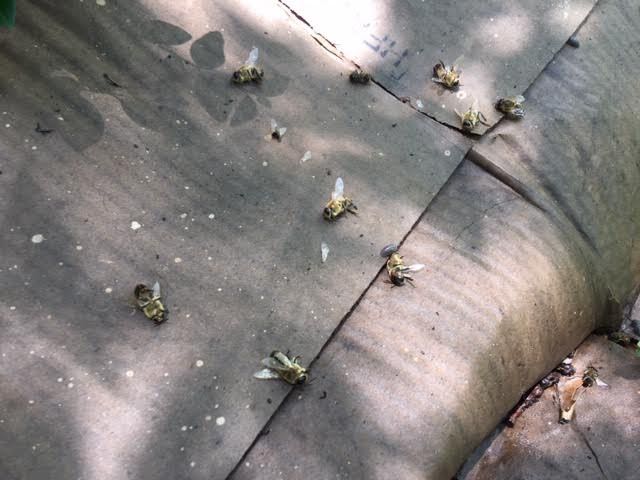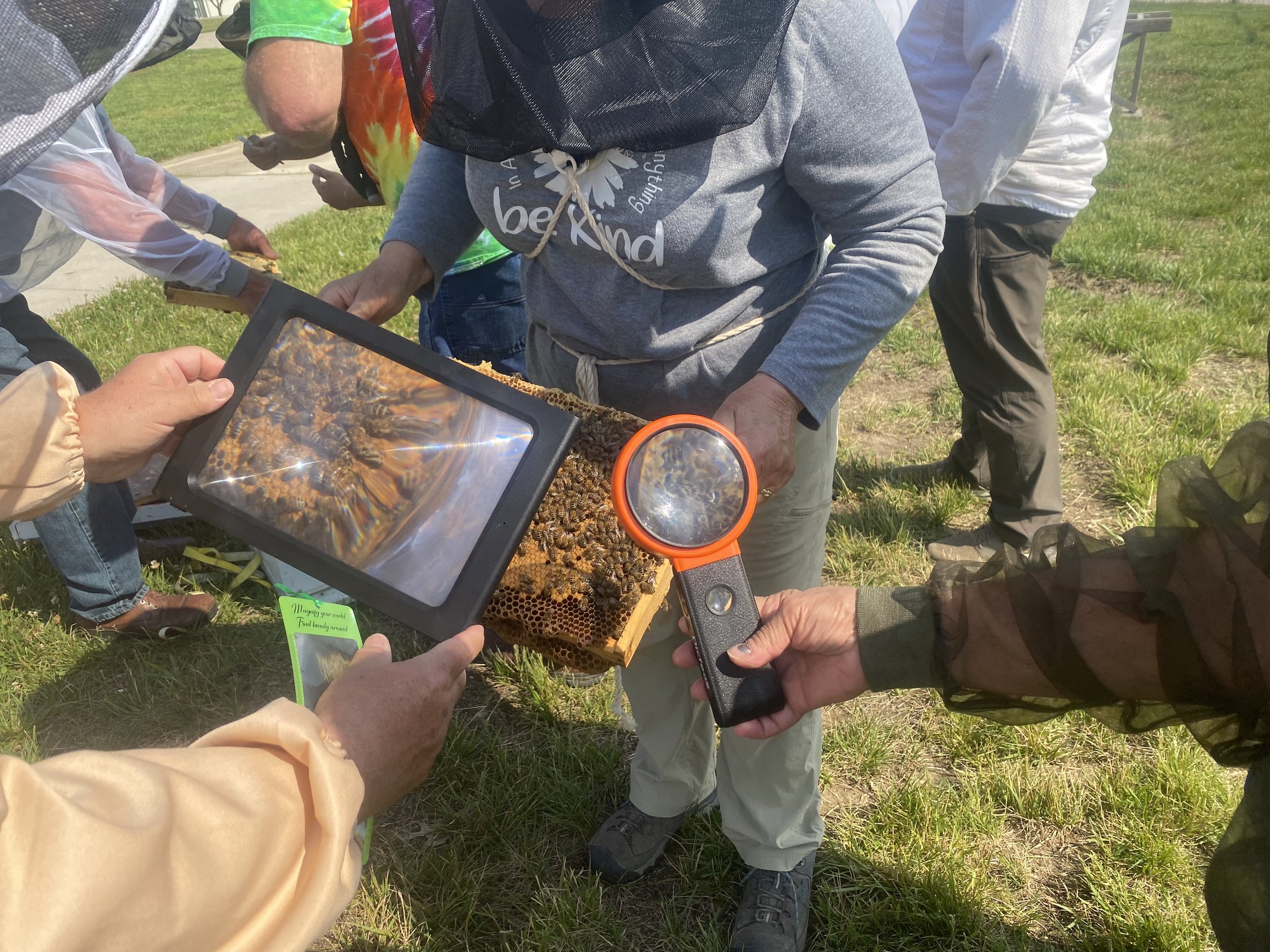Honey for Sale
/Bluebird Gardens Honey is just the way bees made it; this is an 8 oz jar with 12 oz. of honey. (Photo by Charlotte Ekker Wiggins)
Bluebird Gardens Honey for Sale
In answer to a number of requests, I now have Bluebird Gardens honey for sale. This is honey the way the bees made it; not heated or otherwise changed. All I do is filter it from the frames and bottle it. Well, and first convince the honey bees to let me have their extra honey. Each colony has at least two boxes full of honey left to consume through winter.
When you look at honey - and it still amazes me when I do - think about all of the flowers they had to visit to accumulate the flower nectar they dehydrate to 18% to make honey. It takes 2 million blossoms to make one pound of honey.
Not all honey tastes the same. The honey profile changes depending on what flowers they visit. Bluebird Gardens honey is wildflower honey, a collection of nectar from a wide variety of blossoms giving the honey a different profile from year to year.
This Year’s Jar Shortage
It’s been an interesting year to try to find jars and other glass containers as well as lids. The increased interest in gardening and canning has generated a bit of a shortage where I live. With the help of several friends, and by paying a little extra, I now have a good supply.
If you want to bring your own jars, I can work with that as well, the price in general is $1 per ounce of honey. Honey is much heavier than water so I weight the empty jar first, then fill with honey and re-weigh to get the actual honey weight.
Bluebird Gardens Raw Filtered Honey Prices (net weight)
8 oz jar (12 ounces) $ 15
16 oz (1 lb jar) $ 20
22 oz 1.5 lbs (1 pint jar) $ 25
24 oz (2 lbs jar) $ 25
40 oz 2.5 lbs (1 quart jar) $ 40
5 gallons $350
I will have the honey available at my home so contact me to make arrangements for pick up. When you stop by, you can easily see Bluebird Gardens northern apiary from the driveway.
Bluebird Gardens north apiary visible from the driveway. (Photo by Charlotte Ekker Wiggins)
Please turn around at Bluebird Lane’s dead end and park along the road. My driveway does not handle turnaround traffic. Thanks!







































































